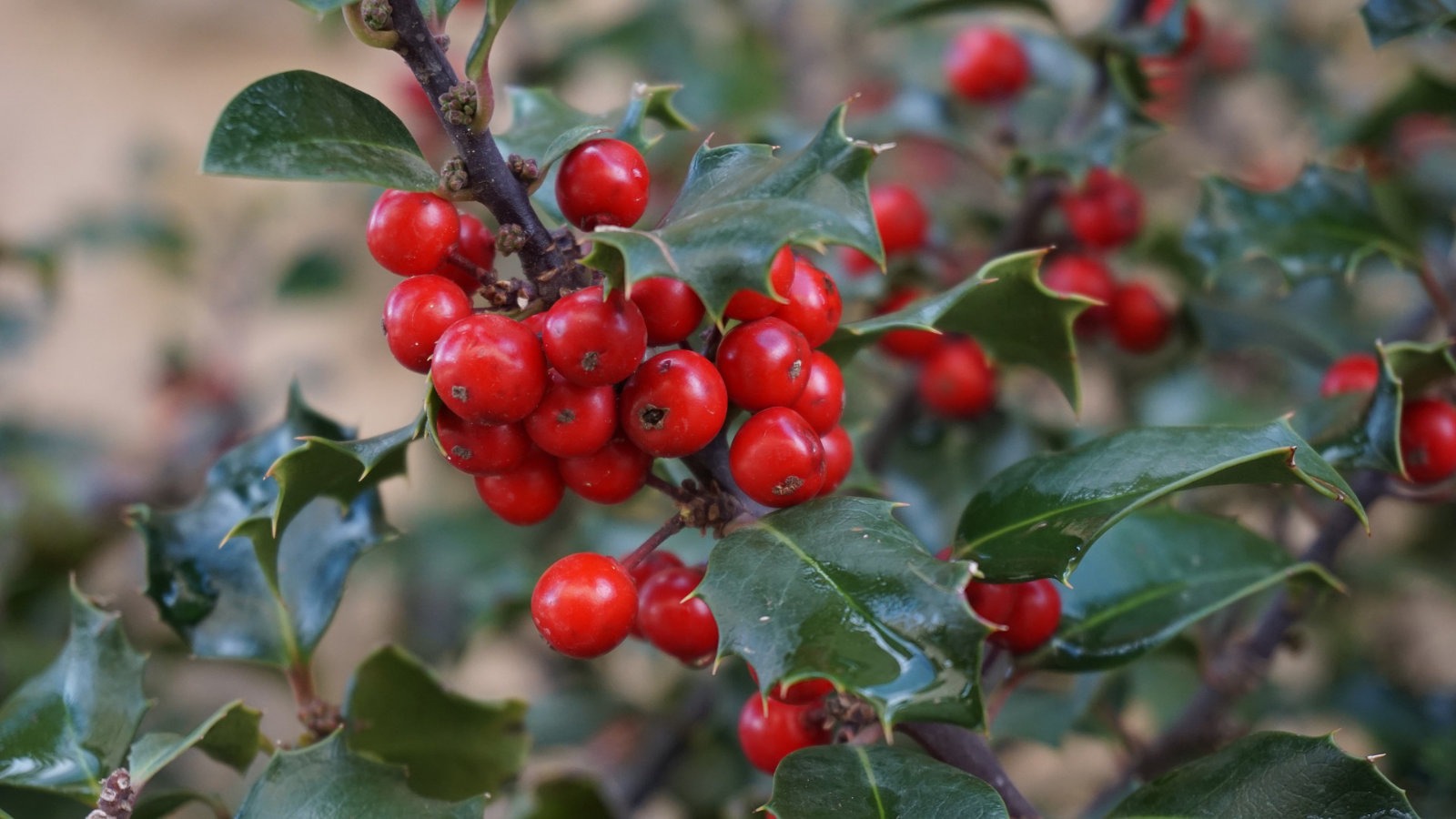Identification
“Deck the halls with boughs of holly fa la la..”. Holly is one of our most well known trees due to its long association with Christmas, but to those who don’t know identifying is easy. There are over 400 species of holly but we will be learning about one of the most likely to be found in our gardens – the native common holly (Ilex aquifolium). It can be found either as a shrub (alone or in hedgerows) or as a tree. The leaves (5-12cm x 2-6cm) are a green colour with a waxy and prickly feel to them. During the winter months the female of the species also has small red berries about the size of a pea. Both male and females produce flowers in spring of a white colour. The male ones have large stamens covered in pollen. If left to grow as a tree it can reach heights ranging from 2 – 25m x 2 – 6m. The bark of the tree is a smooth, greyish colour.
Overview
As you probably discovered from the above section holly is dioecious meaning it has male and female trees. It is pollinated mostly by bees in the spring months when the flowers are around. The female flowers which have been fertilised are the red berries found in winter.
These berries are then eaten by birds which through the use of their droppings will disperse the seeds to other locations. The common Holly is also an evergreen tree so it has leaves all year round. It’s because of the all year round prickly leaves that Holly is considered a good shrub to put in a hedgerow for security.
In the garden
Holly is a great native, wildlife friendly tree to have in the garden, especially if you are a keen bird watcher. The red berries provide food in the increasingly cold winter months for birds such as starlings (Sturnus vulgaris), mistle thrush (Turdus viscivorus), song thrush (Turdus philomelos), fieldfare (Turdus pilaris), redwing (Turdus iliacus), and woodpigeon (Columba palumbus). The berries are poisons to humans so should not be consumed. It also provides year round protection from predators for small birds and mammals because of the prickly leaves and dense foliage. In spring the flowers are also an attraction for bees, and the caterpillars of the holly blue butterfly (Celastrina argiolus). Red deer (Cervus elaphus) and rabbits (Oryctolagus cuniculus) are known to feed on the leaves as well. Not everyone considers this to be a good thing though. Let’s hope they target the wilder ones rather than destroy yours! It’s highly recommended to have Holly as part of a wildlife friendly garden and you will also not have to look too far to “deck your halls with boughs of Holly”.
Did you know?
Holly has lots of interesting facts surrounding it but did you know that chess pieces are made from Holly wood because it is tough, shows little grain, and is great for polishing. There are also lots of traditions and mythology surrounding Holly. See if you can find some out!
